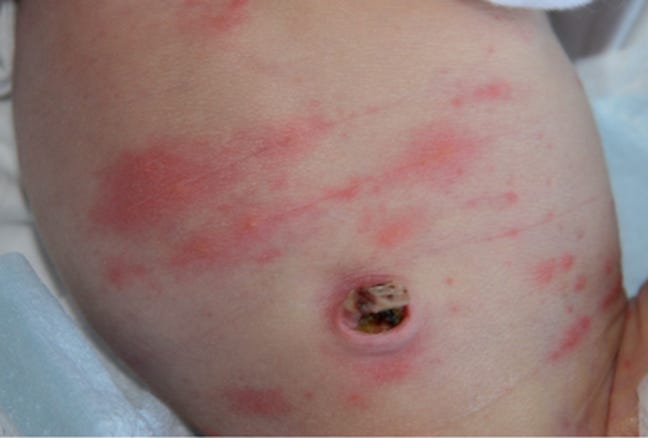First, a review of terms used commonly in the world of dermatology as understood by me, someone who is not a dermatologist.
Macule - a flat lesion that has a different color than normal skin
Papule - a raised lesion
Pustule - a raised lesion that contains pus
Vesicle - a raised lesion that is fluid filled
Working as a Newborn Medicine Hospitalist - if I had to pick the four rashes I see the most - they would be:
erythema toxicum neonatorum
transient neonatal pustular melanosis
slate gray
nevus simplex
Erythema toxicum neonatorum
Erythema toxicum (“e tox”) is the most common pustular rash, occurring in up to 70% of full-term infants. Sometimes called “allergy to life”, the rash is usually not seen at birth but shows up on the 2nd to 3rd day of life.
The rash evolves in several stages.
It starts with a 2-mm to 3-mm reddish blotchy macule or papule (many text books describe this as a “flea-bitten” appearance)
Next comes the red papule with a firm whitish nodule (bump) in the middle.





